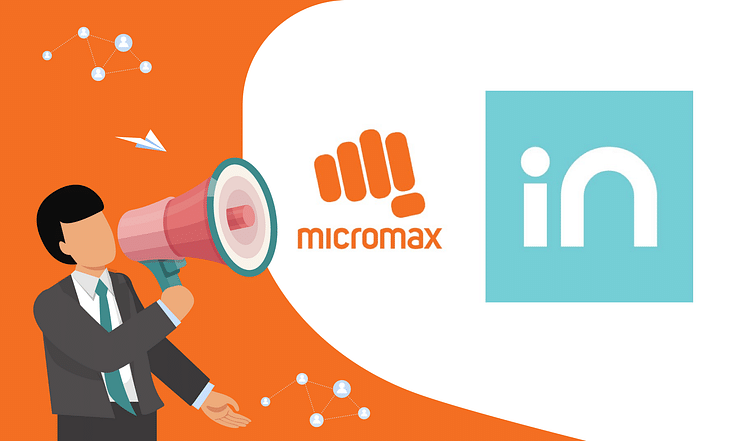The Rise and Fall of Micromax: Are They Coming Back with In?

If you are new to the India smartphone market, you won't believe it but there was a time when Chinese phones were not respected. They had an image of cheap products which would never last long when compared to the likes of market leaders Nokia and Samsung.
And then, there was a brief time before the Chinese brands entered where the Indian smartphone manufacturing companies disrupted the market. Lava, Karbon and Micromax started winning customers with the help of their customer-oriented products which were relatively affordable with new and ‘cool’ features. Within the Indian companies, it was the Gurgaon-based Micromax which won all the accolades.
Micromax was started by Rajesh Agarwal, Vikas Jain, Rahul Sharma and Sumeet Kumar in the early 2000s. The company used to build specialized hardware for Nokia and Airtel. Realizing the massive potential of the smartphone market in India, Micromax forayed into the mobile phone business in 2008. After entering the market, Micromax rapidly made a space within the hearts of customers. If you are currently 20-30 years old, there is a high probability that you too owned a Micromax phone at some point in your life.
Unfortunately, these brands followed the strategy of outsourcing mobiles from China, rebranding and selling them in the Indian market for huge profits. Due to better technology and cheap labour presence, almost all the manufacturing took place in China. Micromax revolutionized the Indian mobile market with touch-screen handsets with dual-sim availability. This is present in every device now, but back then, this was termed as a premium phone.
In 2014, it displaced Samsung from the top to become the country's largest smartphone maker. They were also slated to become a major smartphone brand in the world by volume. But then, Chinese companies started noticing this. Anyway companies like Micromax are just selling rebranded Chinese phones, so why can’t they directly enter the Indian market. And thus, high competition from Chinese counterparts put Indian brands into a corner of the market. By the end of 2019, Micromax lost 90% of its value.
The Indian Flag-Bearers
Micromax mobile phones were loved in the Indian market. This was because people were getting a lot of value from the device at a cheaper price. The number of features offered at such low prices attracts the customers. Secondly, Micromax was an Indian brand. People had a strong affinity towards them at a time when Samsung and Nokia were leading the market. Micromax ventured into the Android space with their Canva Series which became an instant hit. Micromax smartphones also had 3G support, which was not widely available in Nokia or Samsung phones of similar price. But Indian consumers did not really know, nor did they want to, that these phones were all from China.
In 2013, the company was rich enough to sign Hugh Jackman as their brand ambassador. That was the year when one of his biggest movies, Wolverine, was launched. With such a big face promoting their products, Micromax was ready to expand further into a global brand.
By the end of 2014, Micromax was valued at Rs 21,000 crore. Imagine an Indian startup having such high value that they even approached tech giants like Alibaba and Softbank for the stake sale. It was reported that Alibaba was thinking of acquiring 20% of the stake. But that deal went off as the two companies “disagreed on a future roadmap." This was an amazing 5 years for the Gurgaon-based company but things were deemed to change drastically.
The Flood of Chinese smartphones
Soon, the company reached the top of the ladder in the Indian smartphone market. They were the largest seller of mobile phones in India, taking the crown away from Samsung. Also, Micromax was named the 10th largest smartphone manufacturer worldwide. Micromax poured a huge sum of money into marketing. Getting Hugh Jackman on-board meant pushing out a lot of money. Followed by that, Micromax sponsored a lot of events like the concert of Canadian singer Bryan Adams. They also sponsored the international cricket tournament; The Asia cup.
After getting a huge share of the mobile market, Micromax added more electronics in their portfolio. They were making televisions and air-conditioners to gain the overall control of the electronics market. Everything was going great for the company but this all changed with the advent of Chinese counterparts in 2015.
Chinese manufacturers started to see the huge unexploited potential of the Indian market. Companies like Xiaomi, Vivo, Oppo and OnePlus disrupted the whole Indian smartphone market. These Chinese smartphone manufacturers have a huge advantage over Micromax. They were robust enough to design, develop and manufacture the components and the whole device. They didn't have to depend on any other company to do that. Thus, this helped them to cut the cost of production, add more features and provide a better handset and experience to the Indian customers.
Micromax failed to respond to the competition. They did not invest in Research & Development (R&D) and failed to set up their own robust large-scale manufacturing facility. Tensions within the management arose which pushed many senior members to quit the company. Soon, they found huge inventory piled on their warehouses which forced them to stop making the handsets altogether. With poor after-service, customers started losing the love and respect they once had for the Indian company.
Another target of Jio 4G
There's another factor which led to this downfall. The introduction of Reliance Jio 4G. Micromax had 40 different mobile phones but all were based on 2G-3G technology. Jio came up with 4G data which was offered to the customer at no cost. People found out how beneficial the fast internet is. Now, the issue for Micromax was that the Indian market was moving towards the 4G network which cannot be run on their 3G handsets. Thus, people were buying only those handsets which support 4G.
Just like they were late to react to Chinese companies, Micromax was again late to understand the shift from 3G to 4G. By the time they recognize the situation, they already have a huge pile of inventory with 3G phones. Poor marketing, failure to understand the changing dynamics of the Indian market and being late to react to the competition led to the downfall of India's biggest smartphone company.
The Rise Again?
Rahul Sharma, the owner of Micromax has stated that the company is ready to make a comeback. The company is banking on the anti-China sentiments to improve their reputation. Since the last 6 months, there has been a public outrage against the Chinese products. You must have seen or heard the instances of people throwing away their Chinese TV sets or mobile handsets.
The Prime Minister of India also gave the new slogans like "Atma Nirbhar Bharat" and "Vocal for Local". Through this, he is trying to instil a belief within the public to buy goods which are made in India. Micromax decided to catch this opportunity and is launching its new "In" series. Needless to say, this "In" comes from "India". Through this, the company is trying to show the public that the goods are manufactured in the Indian region and not in China anymore.
Apart from the anti-China sentiments, Micromax is also banking on the Production-Linked Scheme for the Indian smartphone segment. To make India a global electronics manufacturing hub, the national government has rolled out a Rs 41,000 crore Production-Linked Incentive (PLI) scheme. The more the company produces as compared to the previous year, the more it is eligible for the financial benefits from the government.
The way forward
This "In" series will have products ranging from Rs 7,000 to Rs 25,000. Through this, they will be directly competing with an ocean of companies offering products from Rs 7,000 to Rs 15,000. Also, they will lock horns with the likes of Samsung and OnePlus who have a stronghold with products ranging within Rs 20,000-Rs 30,000.
Apart from this, Micromax will also invest Rs 500 crores in the country in the next 12 to 18 years. This money will be used in R&D, marketing, and manufacturing. Also, a part of the funds will be used to fund the growth of start-ups which can later grow and aid Micromax.
Getting to the top of the ladder is one thing, staying there is another. It was a decade of two contrasting halves for Micromax. Micromax is surely working on the shortfalls they faced last time. But the smartphone market is very dynamic. It requires companies to stay ahead of the curve. Will Micromax be able to reclaim its lost glory? Can they find a way back "In" to people's hearts?


Post your comment
No comments to display